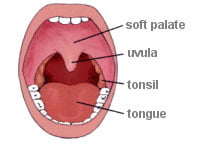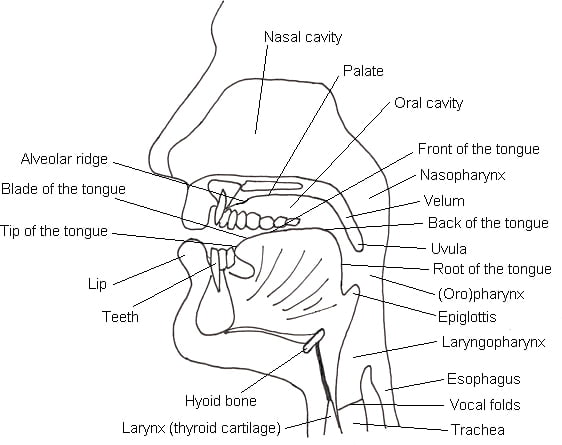Unlocking French language: the ‘r’ rules
“Non, Rien de rien…Non, Je ne regrette rien…”
It was through the smooth lyrics of talented Edith Piaf that I first learnt how to produce a proper French sounding ‘r’. And it’s true. I have absolutely no regrets about fixing up my French ‘r’ phoneme.
Accent can really set you apart from a native speaker. You could speak French extremely well, but if you’re not able to pronounce words like a Frenchman, you stick out like a sore thumb!
However, to perfect the French accent can be really difficult for English speakers. At the very start of my French language learning, grâce à Edith, I gradually learnt to produce a good French ‘r’ sound. This is due to the place of speech sound articulation in English being different to that of the French.
Back then, I hadn’t yet learnt phonetics and therefore had to devise a method to help me learn. Most people would agree that Edith Piaf’s ‘r’ is much more pronounced and accentuated than the common French person, but imitating her ‘r’ sound is a great place to start.
Why is it that the French have this different ‘r’ sound to us, and where is it found? Let me show you…
A quick phonemes lesson – how to speak like the French
There are two ‘r’ phonemes in French language speech, although this is not a rigid rule.
1) /R/ – Voiced uvular trill
The uvula is the tear-shaped flesh that hangs at the back of the mouth cavity. When we make /R/ with the uvula, air is pushed up from the lungs, and passes over the uvula causing it to shake or ‘trill’.
/R/ is a voiced sound, so the vocal cords must vibrate.
Word examples where you would pronounce this sound are rouge, ronronner and rue.
2) /?/ – Voiced uvular fricative
The root of the tongue goes very near to the back of the mouth cavity (scraping the uvula), and
This can be found in words such as rester and rentrer.
Interestingly, this is the same place of articulation as the Arabic ‘r’ phoneme, but there is less friction in French.
Tips on producing the /R/ or /?/ sounds :

Now, listen again to Edith Piaf, to hear how she elongates and accentuates her /R/’s.
Finally and most importantly, find the ‘r’ sound with which you feel most comfortable.
As an English speaker, how did you learn to pronounce the French ‘r’ phoneme?
Or as a French speaker, how have you managed with the English /r/, which also changes depending on accent?
Image credits:1. Edith Piaf, via Last.fm
2. An overview of the vocal tract, via Macquarie University
3. Mouth, via BBC Tyne
4. Keep Calm and Parler Française, via The Keep Calm O-Matic.









Thanks a lot for the tip. I’m making my kiwi boyfriend learn French and the “r” is a bit tricky. I’ll try your method but won’t listen to too much Edith Piaf (I’ve had an overdose ahah).
As for the english ‘r’, I found it quite easy, it sounds fluid in the language. The ‘h’ are the real problem though.
Thank you so much for your comment Cécile. You bring up a very interesting point about the English ‘h’ phoneme. Firstly, there are no uvular sounds in English. The English /h/ is found a bit further back in the throat, at the glottus, and is voiced and fricated. However, even though these sounds have different articulation points, an English speaker can sometimes find the French ‘r’ position easier with the English ‘h’ as reference. Possibly because they are both fricated and quite close in articulation. It may work in reverse for French speakers, I’m not sure! You will have to let me know 🙂
Katerina, your posts are my favorite on this site! I’ve been in France and studying French for just 2 years, and the R’s are killing me! I’ve stopped ordering Brouilly (wine) because the folks at my local bar would crack up every time I forced out something that sounded like Bwoowy. Do you have tips on combining sounds that in English are made at the front of the mouth (the B) immediately followed by one at the back (the R)? Another funny one is the cheese Trou du Cru (a favorite) which you have to be careful to make sure it doesn’t sound like Trou du Cul…
Thank you so much for your kind words sega10028. Let’s discuss the ‘b’ then ‘r’ combination.
(You may want to look at the pic above to see the locations)
A ‘b’ is a voiced bilabial plosive, meaning that both lips come together, hold in a little bit of air, and the release the air when the lips come apart. The reason why you are producing a ‘w’ instead of a ‘r’ is because ‘w’ (voiced labial-velar approximant) is close to the location of ‘b’, and the sound is still being produced at the front of the mouth. Some exercises you could do are trying to go from ‘b’ to ‘h’ to get the feel of moving the tongue. Then try to add a frication. (Look at above comment). This is exactly the same problem moving from ‘c’ to ‘r’.
It’s best to over-accentuate the ‘r’ sound first, then when you get the feel of the positions, you can start to tone it down 🙂 You can also look in a mirror for the /R/ – Voiced uvular trill and see the uvula moving.
+ listening to podcasts and mimicking a French person is a great way, and have a look at the poem ‘le chat’ from Baudelaire’s Fleur du Mal and read it out loud. It’s all about the purring French ‘r’ and beautiful!
Hi Katerina! As a native English speaker I have really struggled a lot with the ‘r’ sound in French! I don’t believe that I have ever even come close. People keep saying that its all in the back of the throat, but it wasn’t until I worked through your article here, that I finally felt I just about had it!! That diagram and explicit explanation of the physical movement was exactly what i needed! Thank you so much!! And I will definitely increase my Edith Piaf listening!